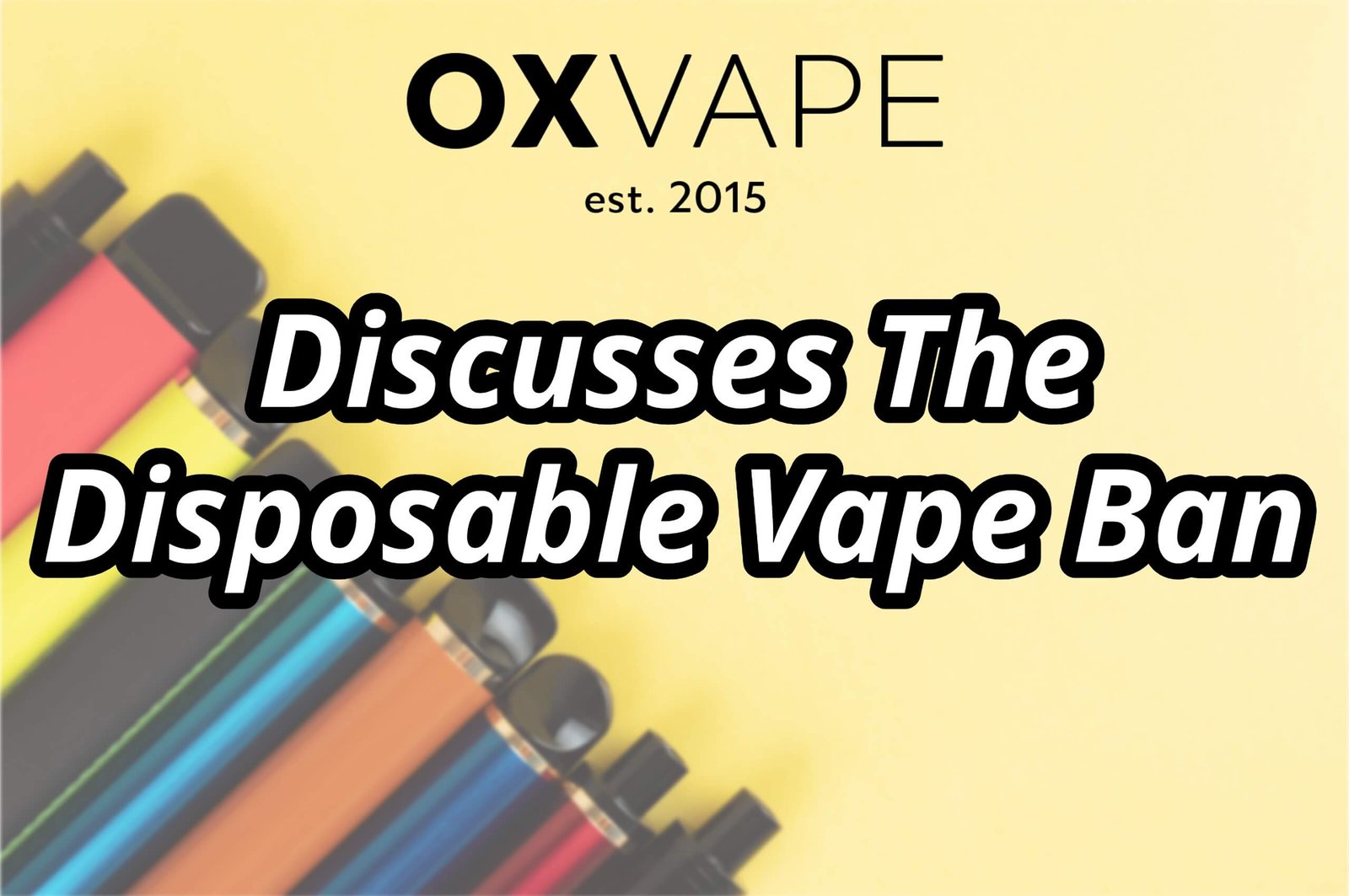Free delivery on orders over £20
Minimum order amount £9.99
Rated 4.8 out of 5 on

A Turning Point for UK Vapers: Disposable Vape Ban Incoming
The vaping landscape in the UK is on the brink of significant change as the government moves to ban disposable vape products. This regulation is part of a broader strategy aimed at improving public health, but it has sparked controversy and raised concerns among vapers, public health advocates, and the industry. While the ban is intended to create a safer environment, it represents a bitter pill for many in the vaping community.
The Rationale Behind the Ban
The primary motivation for the ban on disposable vapes is the protection of youth. The government is determined to prevent vaping among minors, viewing it as a potential public health crisis. The convenience and appeal of disposable vapes have led to a surge in their use, particularly among young people. However, whether the government’s approach will yield the desired benefits remains to be seen. Much of the problem has stemmed from illegal vapes entering the country and rogue retailers selling to underage customers. The government hopes this ban will mitigate these issues.
Implications for Vapers: Adapting to a New Reality
For those who rely on disposable vapes, the ban signifies a major shift. The concern now is how vapers will adapt to a market devoid of one of its most popular products.
Convenience and Access to Harm Reduction
Disposable vapes provided a simple, discreet, and potentially life-saving alternative to traditional smoking. They were accessible without the initial expense of a starter kit or the ongoing commitment to a refillable system. The impact on convenience and accessibility cannot be overstated, as for many, disposable vapes were a crucial first step in their journey to quit smoking.
Exploring Alternatives in the Vaping Market
With disposables on the way out, vapers and the industry are exploring alternatives. Refillable tank kits and other long-term vaping solutions are expected to become more popular. However, these options often require a higher initial investment and more commitment, which may deter those who were attracted to the simplicity of disposable vapes. A practical middle ground could be pod kits with replaceable pods. These devices are low maintenance like disposables but are rechargeable and create less waste.
Concerns About a Black Market: The Unintended Consequences
Prohibitive legislation often leads to the rise of an underground market that is unregulated and potentially unsafe. A ban on disposable vapes could push the business into the shadows, posing new risks to consumers.
A Potential Surge in Illicit Vape Sales
With legal options restricted, there is a genuine concern that unregulated vape products will flood the market. These products do not meet stringent safety standards and quality controls, as evidenced by numerous media reports. Furthermore, restrictions may not significantly impact youth access to vapes, the very demographic the ban aims to protect.
The Risk of Smokers Returning to Cigarettes
Public health advocates fear that a ban on disposable vapes could drive users back to traditional cigarettes, undoing much of the progress made in reducing smoking rates and improving public health.
Potential Consequences
Disposable vapes served as a convenient alternative to smoking, easing the transition towards cessation. Without sufficient alternatives, individuals might revert to combustible tobacco—a significantly more harmful choice.
The Importance of Harm Reduction Strategies
The vaping community has long championed harm reduction over total abstinence. Vaping offers a less harmful nicotine delivery system for those struggling to quit smoking. The ban highlights the need for alternative harm reduction strategies that remain accessible and appealing for smokers seeking to quit. While the government supports vaping as a less harmful alternative to smoking, this move and potential further restrictions threaten to undermine vaping’s benefits.
What Else Is Being Proposed by the Government?
The disposable vape ban may be just the beginning. Additional regulations, such as restrictions on flavours and packaging used by vape manufacturers, are being considered. The debate on effectively regulating the industry while still offering harm reduction solutions is ongoing, with a public consultation likely later this year.
Flavour Restrictions and Their Rationale
Dessert and sweet e-liquid flavours have been contentious in the vaping debate. While appealing to many adult vapers, regulators argue they entice children. Proposed flavour restrictions aim to address this concern but may also limit adult vapers’ choices. Shifting solely to tobacco flavours would be a poor decision, as numerous studies show the importance of diverse flavours in helping smokers quit.
The Potential for Plainer Packaging
Plain packaging for e-cigarettes is being considered to reduce their appeal, especially among young people, similar to the strategy used for cigarettes. The effectiveness of this approach is still uncertain. There is also an argument that such measures may be unnecessary, given the government’s intent to ensure vaping products are sold out of sight of children and away from products that could appeal to them, such as sweets.
Conclusion: Reflection on a Changing Vaping Landscape
As the UK implements a ban on disposable vapes, it marks a significant moment for the vaping industry. Concerns persist about the unintended consequences of such extensive regulation, including a burgeoning black market and a potential resurgence in cigarette use.
The Disposable Vape Ban and Its Potential Effects
The disposable vape ban represents a pivotal shift in the public health approach to vaping. While it may reduce access to potentially harmful products, it also raises questions about the future of harm reduction and consumer choice.
UKVIA’s Suggested Licensing Model
The UK Vaping Industry Association (UKVIA) has proposed a licensing system as a more nuanced approach to addressing youth vaping concerns. This model would require strict compliance with age verification and safer product standards, with retailers needing a licence to sell vape products, similar to alcohol sales. As the dialogue continues, it is clear that a balance must be struck between protecting youth and preserving the positive impact vaping has had on reducing smoking rates.
Ultimately, the ban on disposable vapes signals a significant shift in the UK’s regulatory approach to the vaping industry. Its impact will resonate worldwide, and its potential as a model for other nations remains to be seen. As industry pioneers, the UK must navigate this new landscape, with the foremost challenge being to innovate in a manner that prioritises public health. Disposable vapes were intended as initial starting points, not the primary device for smokers quitting cigarettes. The vape industry is not solely built on disposables and will likely adapt and continue to thrive even as these products decline.




